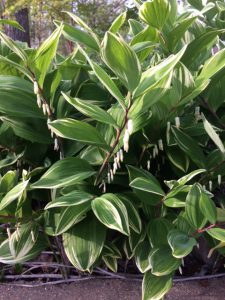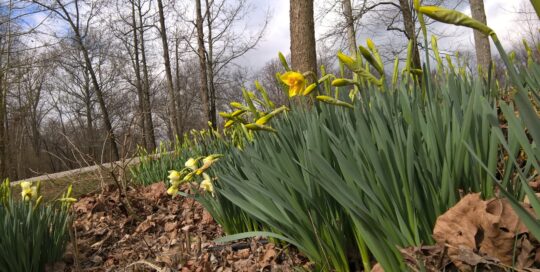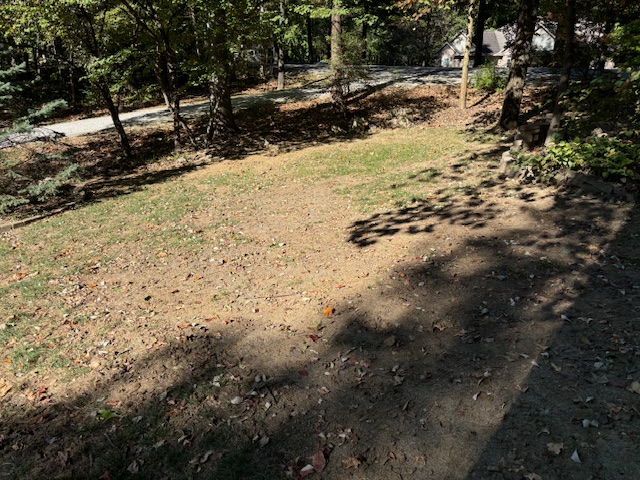A Wise Choice…Solomon’s Seal
Views: 1131

One of my greatest discoveries as a gardener was the Solomon’s Seal hidden in our very own property. Did I mention that when we first bought our property, it really was an impenetrable jungle of Autumn olives, invasive honeysuckles and floribunda roses. We literally had to ask the seller’s permission to whack a few paths through the brush to find out the “lay of the land”.
And, have I mentioned that I was very, very enthusiastic about native plants? And, that I was even more ignorant than I was enthusiastic? Thank goodness for field guides, reference books, more experienced friends, Master Gardeners and the Indiana Native Plant and Wildflower Society (www.inpaws.org). Some of these plant geeks know the Latin names for plants better than I know my children’s names…well, not really, but you get the idea.
Looking for Native Plants
Once we got some of the brush cleared away, I would douse myself with insect repellant, take my trusty field guide and look for native plants. Guess what? I actually found some: Christmas fern (Polystichum acrostichoides), Iris cristata, and Solomon’s Seal (Polygonatum biflorum). Like a little girl hiding behind her mama’s skirt, Solomon’s Seal grew shyly beside a sweet gum tree in one of our first flower beds. I was proud of myself for recognizing it and pleased that it had survived the construction of the flowerbed.
A few years ago, Wonderful Husband had gone out of town to a conference and brought back a cultivar – Variegated Solomon’s Seal. I figured if native Solomon’s Seal grew well by the sweet gum tree, the variegated Solomon’s Seal ought to like it there, too.
Seems like a lot of variegated plants don’t do as well as their fully green counterparts – it make sense because the variegated plant doesn’t have as much chlorophyll in their leaves, so they can’t grow as much. This was certainly not the case with the variegated Solomon’s Seal – it’s much larger and more vigorous than the native plant, it’s not overly aggressive, but has spread slowly by rhizomes.
Solomon’s Seal
It’s white, twin blooms hang underneath the arching stem and aren’t very showy, but the resulting purplish-black berries are very much enjoyed by wildlife. For people, the berries and leaves are toxic, causing nausea and vomiting. Supposedly, the roots and young stems are edible, but I’m not going to find out.
Both Europeans and the Original Peoples in North America used this herbaceous perennial for its medicinal properties, in treating wounds, cuts, removing freckles and healing broken bones. Hardy in Zones 3 to 9, it likes shade and tolerates clay soil. I haven’t noticed the deer eating it and it needs very little attention. I like that little bit of contrast between the reddish-brown stem and the green and white leaves. Also, I think the elegantly arching stems with their opposite leaves are quite attractive and make a nice understory accent.
It’s a plant that deserves a spot in your woodland garden, even if you don’t want to eat it or use it for freckle removal!
Stay Green, Good Friends!
Meet Dona Bergman
Dona Bergman is a founding member, Southwest Indiana Chapter of the Indiana Native Plant & Wildlife Society, and an Advanced Master Gardener.







